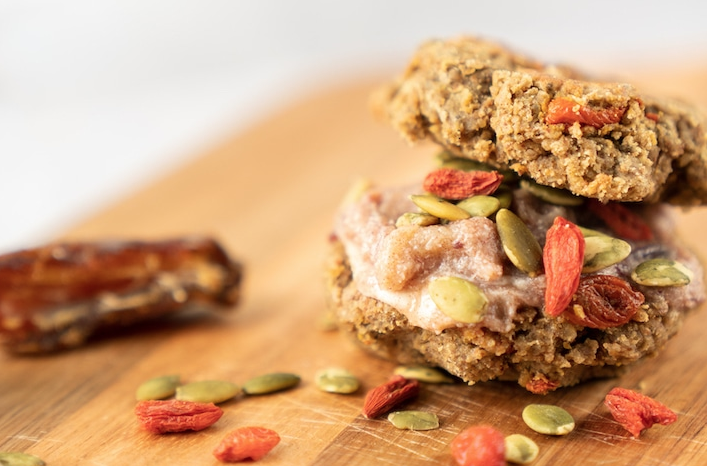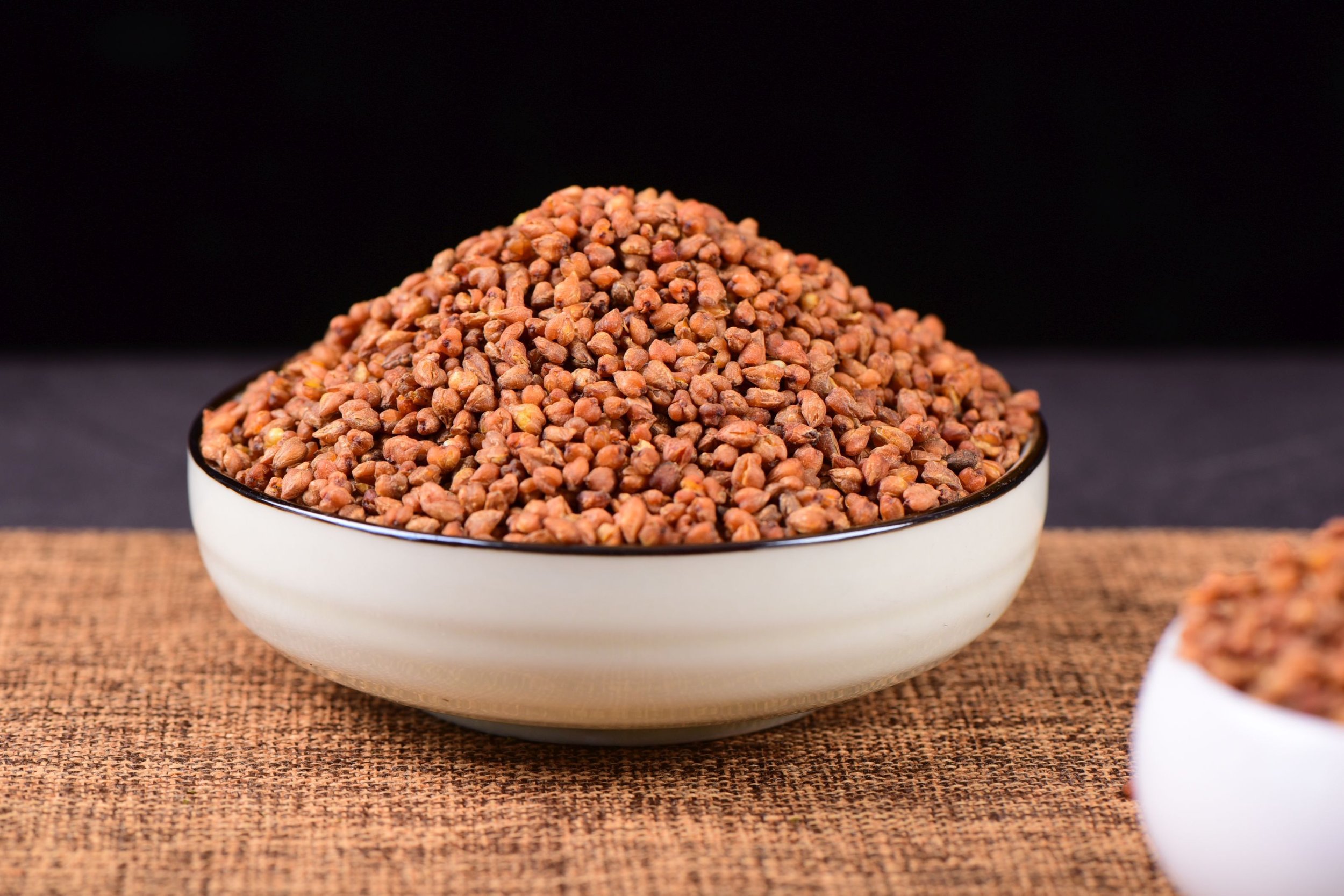One of the most exciting advances to emerge from the public’s heightened awareness of celiac disease and gluten sensitivity is the rediscovery of ancient, gluten-free, heirloom seeds and grains.
Himalayan Tartary Buckwheat (Fagopyrum tataricum) – a naturally gluten-free variety of buckwheat–-is an excellent example of such a rediscovery.
This nutrient-rich strain of buckwheat originated in southeast China and was brought to regions of the Himalayas thousands of years ago, where it thrived under the extreme weather conditions. It made its way along the Silk Road to Europe in the Middle Ages and eventually to colonial North America, where it thrived.
But F. tataricum has a relatively low seed yield and bitter flavor, both of which caused it to fall out of favor among early American farmers who gradually replaced it with higher yield, milder-flavored cereal grains like wheat and corn. As a result, this nutrient-dense seed disappeared from America’s pantries until recently, when functional medicine pioneer, Jeffrey Bland, PhD, learned about its powerful phytochemical profile.
Dr. Bland is a founder of the Institute for Functional Medicine, and the Personalized Lifestyle Medicine Institute. A nutritional biochemist by training, he has a reputation as one of the most well-read and scientifically literate people in the world. In the course of his literature searches, he discovered that Himalayan Tartary buckwheat (HTB) contains over 130 diverse phytochemicals, including high levels of flavonoids like quercetin, rutin and hesperidin.
There is also a newly discovered bioactive molecule called 2-hydroxybenzylamine (2-HOBA) that is, as far as anyone knows, found only in the seeds of this plant.
According to Dr. Bland, HTB is the most immuneoactive, nutrient-dense plant yet discovered. He has made it his mission to re-introduce this unique and nutritious plant into the diets of people in this hemisphere. His new company, Big Bold Health, is the first to launch HTB flour into the US market. Thanks largely to his efforts, HTB is now being cultivated on US soil for the first time in more than a century.
Himalayan Tartary buckwheat (HTB) contains over 130 diverse phytochemicals, including high levels of flavonoids like quercetin, rutin and hesperidin. There is also a newly discovered bioactive molecule called 2-hydroxybenzylamine (2-HOBA) that is, as far as anyone knows, found only in the seeds of this plant.
When I saw my long-time mentor bubbling with excitement about this ancient seed, I had to find out why.
Himalayan Tartary Buckwheat (Fagopyrum tataricum) has been cultivated as a food crop in the extreme climate of the Himalayas for centures. Naturally gluten-free and extremely rich in phytonutrients, it has recently been rediscoved by the functional medicine community in the US.
Phytonutrients & Co-Evolution
To understand the potential impact of HTB, it is worthwhile reflecting on the nature of phytochemicals and the process of co-evolution we share with the plant world.
Phytochemicals, or phytonutrients, are “secondary metabolites” produced by plants as part of their elaborate defense mechanism. These compounds are central to a plant’s immune system, helping to protect it from a range of insect and microbial predators, as well as from ionizing radiation, toxins, and other stressors like drought. The harsher the environment, the more phytochemicals the plants naturally produce.
Because we’ve co-evolved eating plants, we’ve developed receptors for their phytonutrients which have positive influences on our own metabolism. When we consume colorful pigmented plant foods, we’re effectively borrowing the plants’ immune systems to regulate our own physiology. Plants that produce compounds beneficial to us humans gain a reproductive advantage in that we tend to propagate them widely.
So far, we humans have discovered more than 25,000 phytochemicals. The Rockefeller Foundation has taken on the gargantuan task of categorizing them as part of its Periodic Table of Food Initiative (PTFI).
Phytonutrients interact with our genes to influence phenotypic expression, reduce inflammation, improve mitochondrial function, support detoxification, balance hormones and more. A few common examples include Epigallocatechin gallate (EGCG) in green tea, glucosinolates in broccoli, and curcumin in turmeric.
Phytochemicals differ from macro- and micronutrients in plants, in that a lack of a specific phytonutrient does not necessarily cause disease. For example, an extreme lack of dietary ascorbic acid results in scurvy, but a lack of EGCG does not result in any specific disease. That said, phytonutrients do provide many benefits, and a diet lacking in phytocnutrients contributes to age-related and chronic conditions.
HTB contains an impressive array of phytonutrients with beneficial effects on lipid metabolism, immune regulation, and blood sugar metabolism due to its soluble fibers and d-chiro-inositol (Huda MN et al. Food Chem. 2021).
Myriad Benefits
The discovery of 2-HOBA, also called salicylamine, is causing particular excitement. It is a naturally-occurring, lipophilic analog of vitamin B6 (pyridoxine) (Davies SS, Zhang LS. Curr Pharmacol Rep. 2017). HTB appears to the only food source of this compound.
Preclinical trials suggest that 2-HOBA protects against cellular damage by scavenging reactive carbonyl species. According to a 2019 research summary by the Alzheimer’s Drug Discovery Foundation, it may also protect against cognitive decline stemming from age-related increases in brain lipid oxidation.
This phytonutrient also has potential heart-health benefits. It may protect against cardiovascular pathology by preventing the protein dysfunction and inflammation associated with reactive carbonyl species.
Flavonoids in HTB promote mitophagy and aid in clearing injured mitochondria and damaged immune cells that can lead to immunosenescence. The phytonutrients in HTB buckwheat are considered “cytokine modulators” that regulate gene expression and cytokine secretion.
Befriend the Bitter
Phytonutrients, in concert with macro and micronutrients, give each plant its unique flavor profile. Spices, herbs, vegetables, fruits, grains, beans, and seeds taste the way they do because of their distinctive phytochemical blends.
As we’ve hybridized and engineered plants for rapid growth, higher yield, and larger size, we’ve diminished phytonutrient content and variety. This has resulted in a significant reduction in flavor. In fact, the modern American palate has lost the taste for many important phytochemicals—especially the bitter ones. Unfortunately, we’ve also lost the health benefits that many of these compounds confer.
Dr. Bland believes US consumers are ready to experience the full flavor of food once again, including a little bitterness.
The slight bitter flavor of HTB is due to the high concentration of polyphenols. It contains the highest levels of rutin in any known plant. It also produces quercetin, hesperidin, diosmin, luteolin, and fisetin.
These flavonoids stimulate bitter sensors present not only on the tongue but throughout the gastrointestinal tract. Bitter flavors trigger production of hormones through the “enteroendocrine system”, which regulates appetite, inflammation, intestinal motility, and insulin sensitivity via enhanced GLP-1 secretion (Kok BP, et al. Mol Metab. 2018).
A Nutritional Powerhouse
Beyond its high phytonutrient content, HTB has other positive nutritional features. It is:
Rich in prebiotic fibers
A low glycemic response food (due to its high levels of d-chiro inositol)
High in complete protein. At 10-13% protein, it is much higher than other grains that average 5% protein
A good source of essential amino acids lysine, tryptophan, and methionine
High in magnesium, zinc, iron, and B vitamins
High in total polyphenols (60 times greater than conventional buckwheat)
In collaboration with Vanderbilt University and other groups, Big Bold Health has embarked on a series of early-stage human clinical studies looking at the effects of HTB consumption.
HTB intake attenuated insulin resistance and improved lipid profiles in a cohort of 165 patients with type 2 diabetes
In an uncontrolled exploratory study, researchers used continuous glucose monitoring (CGM) to assess glycemic status in nine healthy, non-diabetic adults (7 women, 2 men) over 14 days. After overnight fasts of at least 10 hours, participants recorded their blood sugar levels, and then ate daily test foods featuring HTB flour in diverse forms. For comparison, they were also given 50 grams of carbohydrate from white bread on days 1, 5, and 9. For 2 hours after each test ‘meal’ the CGM devices tracked peak glycemic excursions.
Compared to white bread, the HTB foods resulted in lower pooled average peak glycemic excursion over the 120-minute observation window (Bland J, Big Bold Health. 2021).
In an earlier randomized controlled trial, HTB intake attenuated insulin resistance and improved lipid profiles in a cohort of 165 patients with type 2 diabetes who were randomized to systematic diet plans with or without HTB (Qiu J, et al. Nutr Res. 2016).
Scaling Up Production
Dr. Bland is building a network of US-based growers to scale up domestic production of organically certified HTB. These farms are using regenerative agricultural practices in conditions that mimic the environment in which this unique plant originated.
Once harvested HTB seeds are milled into flour using a low-heat milling technique that preserves the phytonutrients. Every batch of flour is tested for total polyphenols and ORAC units at the time of initial milling. Big Bold Health certifies that each package of its HTB flour contains:
Over 100 different phytonutrients, including 1,000 mg of immune active phytochemicals per 100 grams.
An ORAC value of 17,000 units per 100 grams of HTB (versus 360 units per 100 grams of whole wheat, and 8,200 units per 100 grams for common buckwheat).
Rachelle Robinett’s Golden Berry Breakfast Cookies featuring HTB flour
Culinary Considerations
Because Himalayan Tartary Buckwheat Super Nutrition Flour is naturally gluten-free, it doesn’t build the glutinous body that is common with mainstream wheat flours. Consequently, baking with HTB alone can lead to rather dense results. To lighten it up for pancakes, cookies, muffins, and crumbles, I recommend blending it 50/50 with coconut or almond flour. Adding a little seltzer water, baking soda, and baking powder to batters will also help keep the end result lighter.
By itself, HTB flour can be rather bitter, but this is easily balanced by adding monk fruit or allulose sweeteners which do not alter blood sugar, and spices like ginger, cinnamon, cardamom, cloves, and nutmeg.
When adding raw HTB flour to smoothies, overnight oat bowls, or other dishes that don’t require cooking, toast ¼ – ½ cup of the flour in an even layer on a cookie sheet for about 5-10 minutes at 170°F, before adding it to the other ingredients.
HTB flour can also be used to thicken soups, curries, stews, sauces, and gravies. Just whisk in 1 teaspoon at a time, until you get close to your desired thickness. But keep in mind that it will thicken more as it cools. You can also create a slurry by mixing the flour with a little water to reduce lumpiness.
By itself, HTB flour can be rather bitter, but this is easily balanced by adding monk fruit or allulose sweeteners (which do not alter blood sugar), and spices like ginger, cinnamon, cardamom, cloves, and nutmeg.
As a naturopathic doctor, acupuncturist, and dedicated cook, I’ve now used Himalayan Tartary Buckwheat Super Nutrition Flour in waffles, curries, and a version of “Life-Changing Bread” (aka Essene bread). Its golden color, intriguing flavor, and phytonutrient density make it a welcome addition to the family of gluten-free seeds like amaranth, quinoa, teff and millet.
For more ideas, inspiration, and a growing database of recipes, visit www.bigboldhealth.com/blog.
Article written by Dr. Sally LaMont originally posted on: HolisticPrimaryCare.net



